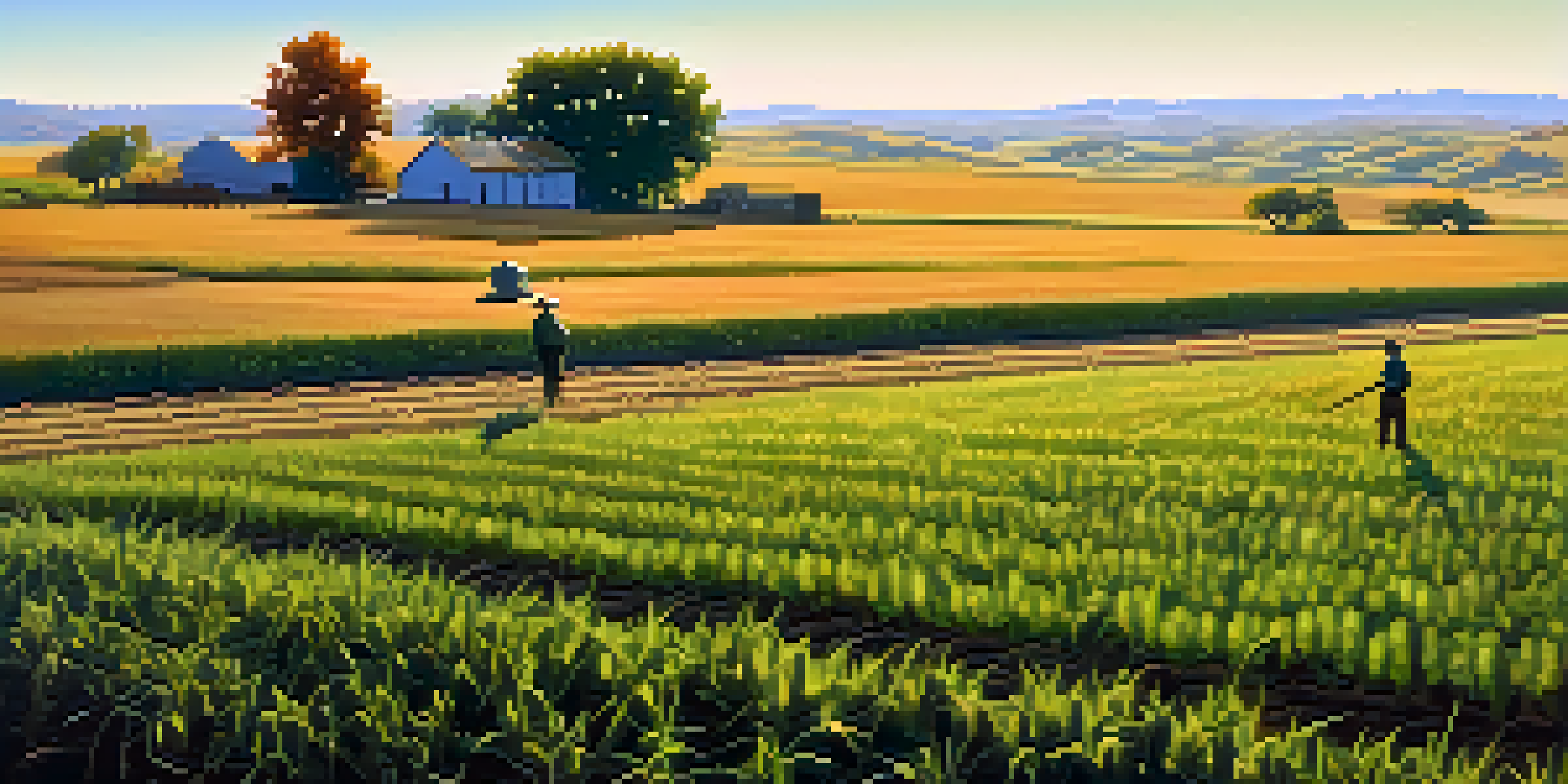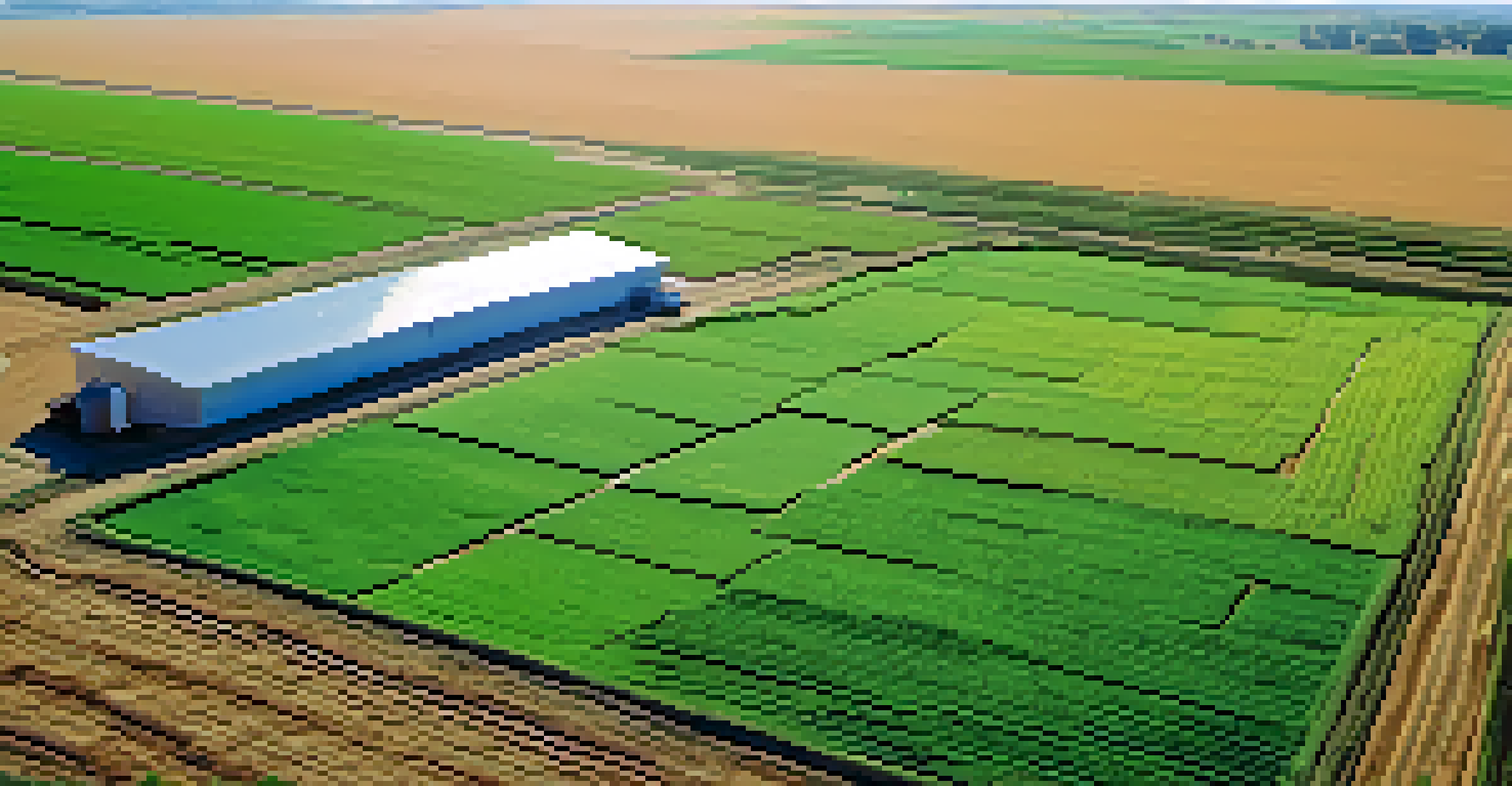Drought Preparedness: Strategies for Kansas Farmers

Understanding the Impact of Drought on Agriculture
Drought can significantly affect crop yields and livestock health, leading to financial strain for farmers. In Kansas, where agriculture is a cornerstone of the economy, understanding this impact is crucial. Farmers must recognize that even short periods of drought can disrupt planting schedules and reduce harvests, making it essential to prepare in advance.
Droughts are not just a challenge; they are a call to innovate and adapt our agricultural practices.
The effects of drought extend beyond just crop loss; they can also lead to soil degradation and water shortages. For instance, reduced soil moisture not only hampers plant growth but can also affect the nutrient availability in the soil. Farmers who grasp these challenges can better strategize their operations to mitigate risks.
To truly prepare for drought, farmers should analyze historical data on drought patterns in Kansas. This information can guide them in implementing effective water conservation practices and choosing drought-resistant crops, ensuring they remain resilient against these climatic challenges.
Implementing Efficient Water Management Practices
Water management is a key element in drought preparedness. Techniques such as drip irrigation and rainwater harvesting can be game-changers for Kansas farmers. By optimizing water usage, they can ensure that their crops receive the necessary moisture even during dry spells.

Another efficient practice involves creating a comprehensive irrigation plan that accounts for varying crop needs and soil types. This approach not only conserves water but also helps farmers allocate resources more effectively. For example, using soil moisture sensors can provide real-time data to inform irrigation decisions.
Drought Impacts Crop Yields
Drought significantly affects crop yields and livestock health, making it crucial for farmers to prepare and adapt their practices.
Moreover, farmers should consider the long-term benefits of investing in water-saving technologies. While there might be an upfront cost, the potential savings and increased resilience during drought periods make it a worthwhile investment. It's about thinking ahead and making choices that protect both the farm and the environment.
Selecting Drought-Resistant Crop Varieties
Choosing the right crops is essential for surviving drought conditions. Kansas farmers should look for drought-resistant varieties that can thrive with less water. These crops, often bred specifically for resilience, can help maintain yields even during challenging weather.
The health of the soil is paramount; it is the foundation upon which all agricultural success is built.
For instance, crops like sorghum and certain types of millet are known for their drought tolerance. Understanding the growth characteristics of these plants allows farmers to make informed decisions about what to plant each season. This not only ensures food production but also lessens reliance on irrigation.
Additionally, farmers can explore crop rotation strategies that include drought-hardy plants. This not only enhances soil health but also diversifies the farm’s output, reducing risk. By planning their crop selection carefully, farmers can create a more sustainable and resilient agricultural system.
Soil Health: The Foundation of Drought Resilience
Healthy soil is the backbone of any successful farming operation, especially during droughts. Practices such as cover cropping and reduced tillage can improve soil structure and water retention. When soil is healthy, it can hold more moisture, providing crops with essential hydration.
Farmers can also benefit from regularly testing their soil to understand its nutrient content and pH levels. This knowledge allows for tailored amendments that can enhance soil fertility and water retention capabilities. For example, adding organic matter can improve soil's ability to hold moisture.
Water Management is Essential
Implementing efficient water management practices, such as drip irrigation and rainwater harvesting, can help farmers optimize water use during drought.
Incorporating agroecological practices can further boost soil health. Techniques like composting and using green manures not only enrich the soil but also promote biodiversity. By prioritizing soil health, farmers can build a resilient foundation that supports crop growth even in dry conditions.
Utilizing Technology for Better Decision-Making
In today's digital age, technology plays a vital role in drought preparedness. Farmers can leverage tools such as weather forecasting apps and soil moisture sensors to stay informed and make timely decisions. These resources provide critical insights that can enhance water management strategies.
For example, satellite imagery can help farmers monitor crop health and water needs from above. By analyzing this data, they can identify areas that require attention and adjust their practices accordingly. This proactive approach allows for better resource allocation, especially during drought conditions.
Moreover, joining agricultural networks that share data and insights can further empower farmers. Collaborating with neighboring farms and utilizing shared technology can lead to innovative solutions for drought challenges. In essence, technology can transform how farmers approach their operations.
Building Community Resilience Through Collaboration
Community collaboration is key to enhancing drought preparedness in Kansas. Farmers can benefit greatly from sharing resources, knowledge, and experiences. By forming local groups or networks, they can pool information on best practices and drought management strategies.
For instance, organizing workshops or training sessions can help farmers learn from experts and each other. These gatherings can foster a sense of community while equipping participants with valuable skills to cope with drought. Knowledge sharing is powerful, and it strengthens the agricultural community as a whole.
Community Collaboration Strengthens Resilience
Building community networks allows farmers to share resources and knowledge, enhancing overall drought preparedness and resilience.
Additionally, local governments and agricultural organizations can play a supportive role in this collaborative effort. By providing resources and funding for community initiatives, they can help farmers implement drought mitigation strategies. Together, communities can build resilience that benefits everyone involved.
Policy and Support: The Role of Government in Drought Preparedness
Government policies play a crucial role in supporting farmers during drought conditions. Programs that provide financial assistance or subsidies for drought-resistant crops can alleviate some of the pressures farmers face. Understanding these resources is essential for Kansas farmers as they navigate challenging environments.
Moreover, advocacy for sustainable agricultural practices and water conservation policies can lead to long-term benefits. When farmers voice their needs and collaborate with policymakers, they can influence decisions that support their livelihoods. This partnership can result in more comprehensive drought management plans.

Additionally, educational programs that inform farmers about available resources can empower them to make better decisions. By staying informed about government initiatives, farmers can take advantage of tools and support systems designed to enhance their drought resilience.